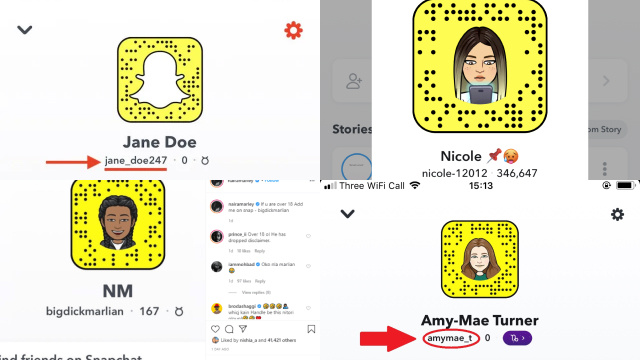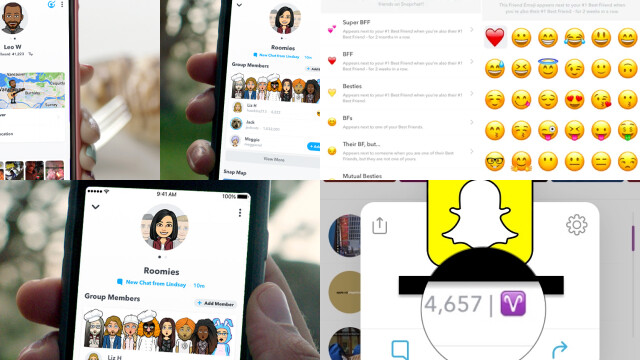Introduction to Snapchat and its Features
Snapchat is a social media platform that allows users to share photos and short videos with friends and followers. The app is known for its unique features, including disappearing messages and filters that add special effects to photos and videos. Snapchat also offers a feature called Snap Map, which allows users to see the location of their friends and nearby events.

In addition, Snapchat offers a messaging feature that allows users to chat with friends in real-time, and a Discover feature that lets users view news and entertainment content from various publishers. Snapchat’s user interface is designed for a younger audience, with playful and colorful graphics, making it popular among teenagers and young adults. Overall, Snapchat’s features provide a fun and creative way for users to connect and share content with their friends and followers.
Snapchat is a popular social media platform that allows users to share photos, videos, and messages with their friends. While the app provides a range of privacy features, it does collect some personal information from users.
Snapchat collects basic user information, such as name, email address, and phone number, to create and manage user accounts. The app also collects usage data, such as what snaps users view, how long they view them, and what features they use. This information is used to improve the app’s functionality and to personalize user experiences.
However, Snapchat does not share user content with third parties, nor does it sell user information for advertising purposes. The app does share some information with third-party providers, such as advertisers and analytics companies, but this information is anonymized to protect user privacy.
Overall, while Snapchat does collect personal information from users, it does so for legitimate reasons and takes steps to protect user privacy. Users can also control their privacy settings and choose who can see their content and information.
How Your Snapchat Activity is Tracked
Snapchat tracks user activity to improve the app’s performance, provide personalized recommendations and ads, and offer better user experiences. The app collects basic user information, such as the user’s name, username, and profile picture, as well as device information, such as the user’s device ID, operating system, and mobile network information. Additionally, Snapchat collects usage data, including the user’s messaging activity, such as messages sent and received, and media shared. This data is used to improve the app’s performance and provide personalized recommendations and ads.

Snapchat also uses cookies and other tracking technologies to track user activity on the app and on other websites and apps that use Snapchat’s advertising services. This data is used to target users with relevant ads and measure the effectiveness of advertising campaigns.
While Snapchat’s data collection is used to enhance the user experience, it is important for users to understand what personal information is being collected and how it is being used to protect their privacy while using the app.
What Your Snapchat Profile Says About You
Snapchat is a popular social media platform that allows users to share images and videos with their friends for a limited time. While the app is primarily used for fun and casual communication, users can actually learn a lot about someone from their Snapchat profile.
Firstly, the profile picture is usually a good indicator of a person’s personality. A selfie or a goofy picture suggests that they are outgoing and enjoy having fun, while a more professional headshot might indicate a more serious personality.
Another aspect to consider is the type of content a user shares. If they frequently post about parties and social events, they may be seen as more social and outgoing, whereas someone who posts mostly about their hobbies or work may be seen as more introverted or career-focused.
Overall, a Snapchat profile can provide insight into a person’s interests and personality, making it a valuable tool for getting to know someone better.
Understanding Your Snapchat Friendships
Snapchat friendships are unique in that they are based on mutual communication and interaction. When you add someone as a friend on Snapchat, they will be able to see your stories and send you snaps. However, you can also control who sees your stories and snaps by customizing your privacy settings.

Snapchat also offers several friendship levels, including Best Friends, which are the people you interact with the most, and Snapstreaks, which are consecutive days of exchanging snaps with a friend. These features add a fun and competitive element to the app, and encourage users to stay engaged with their friends.
It’s important to note that Snapchat friendships are not always indicative of real-life friendships, and that the app’s features are designed to encourage communication and engagement. It’s up to each user to decide how they want to use the app and who they want to interact with on the platform.
Risks and Concerns with Snapchat’s Data Collection
Snapchat advertisers use a variety of targeting methods to reach specific audiences on the platform. One of the most common targeting methods is demographic targeting, which allows advertisers to target users based on factors such as age, gender, and location. Advertisers can also target users based on interests, behaviors, and other data points collected by Snapchat.
Snapchat also offers a unique targeting feature called Snap Audience Match, which allows advertisers to upload their own customer lists and target those users on the platform. Additionally, Snapchat’s Lookalike Audience feature allows advertisers to target users who have similar characteristics and behaviors to their existing customers.
Snapchat also tracks user activity on the platform, such as the types of content users engage with and the amount of time they spend on the app. This data is used to create custom audiences and target users with relevant ads.
While Snapchat’s targeting methods are designed to provide personalized and relevant ads to users, it’s important for users to be aware of how their data is being used and to take steps to protect their privacy while using the app.
Tips for Protecting Your Privacy on Snapchat
Snapchat is a popular social media app that allows users to share photos and videos with their friends. However, with the amount of personal information shared on the app, it’s important for users to take steps to protect their privacy. Here are some tips for safeguarding your privacy on Snapchat:
- Adjust your privacy settings: Customize your privacy settings to control who can view your snaps and stories. You can also limit who can send you snaps and enable two-factor authentication for added security.
- Be cautious of who you add as a friend: Only add people you know and trust as friends on the app. Avoid accepting friend requests from strangers or suspicious accounts.
- Don’t share sensitive information: Refrain from sharing sensitive information on Snapchat, such as your phone number or home address.
- Regularly delete your content: To minimize the amount of personal information available on the app, regularly delete your saved chats and media.
By following these tips, you can protect your privacy and enjoy a safer experience on Snapchat.
The Evolution of Snapchat: From Privacy Concerns to Enhanced Security
Snapchat, initially celebrated for its self-destructing messages and ephemeral content, has come a long way in addressing privacy concerns and enhancing security. The platform, once criticized for potential privacy issues, has taken significant steps to protect user data and provide a safer experience.
- End-to-End Encryption: In recent years, Snapchat introduced end-to-end encryption for messages and calls, ensuring that only the sender and receiver can access the content. This security measure prevents eavesdropping and data interception.
- Privacy Settings: Snapchat allows users to customize their privacy settings, such as who can send them messages, view their stories, or see their location on Snap Map. This empowers users to control who interacts with their content.
- Two-Factor Authentication (2FA): Snapchat encourages users to enable 2FA to add an extra layer of security to their accounts. With 2FA, even if someone has your password, they cannot access your account without the secondary authentication method.
- Improved Data Handling: Snapchat has fine-tuned its data collection practices, minimizing the amount of data stored. They’ve also become more transparent about the data they retain and the purpose it serves.
- Snap Map Privacy: The introduction of Snap Map included privacy features, allowing users to share their location selectively with specific friends or remain in “Ghost Mode” for complete location privacy.
- In-App Safety Tools: Snapchat has integrated tools that educate users about safety and online etiquette, including combating cyberbullying and reporting inappropriate content.
- Content Moderation: The platform has improved its content moderation to prevent the sharing of explicit or harmful content.
- Legal and Compliance: Snapchat has complied with data protection laws and regulations, including GDPR in Europe, to protect user data and privacy rights.

While Snapchat has made remarkable strides in enhancing its security and privacy features, users should remain cautious about the content they share and their interactions with others. Practicing good digital hygiene and keeping privacy settings updated ensures a safer and more enjoyable Snapchat experience. The platform’s journey from privacy concerns to enhanced security is a testament to the evolving landscape of online privacy and user protection.
Conclusion: Balancing Social Connection and Privacy on Snapchat
Snapchat provides a unique and engaging platform for social connection, but it’s important to balance this with privacy concerns. While the app’s data collection practices have raised some valid concerns, there are steps users can take to protect their privacy and enjoy the benefits of the platform.
By adjusting privacy settings, being cautious about adding friends, avoiding sharing sensitive information, and regularly deleting content, users can minimize the risk of their personal information being misused or compromised.

Ultimately, it’s up to each user to decide how much personal information they’re comfortable sharing on the app. While some users may be comfortable sharing more than others, it’s important to be aware of the potential risks and take steps to protect your privacy.
By striking a balance between social connection and privacy, users can enjoy all that Snapchat has to offer while still safeguarding their personal information.







